Ipomea violacea seeds give a quiet, dreamy and trippy experience, a clear mind and an heightened sensitivity to light and sounds. The seeds of some varieties contain LSA (D-lysergic acid amide) and can cause visual and perceptual effects similar to LSD. LSA containing varieties include Heavenly Blue, Flying Saucers, and Pearly Gates.
While morning-glory seeds may be ground and brewed into tea or taken intravenously, the common method of ingestion is by thorough t chewing. This action, before swallowing, permits the seed 's psychoactive chemicals to be easily absorbed by the body. 3 to 10 grams of seeds are thoroughly chewed and swallowed or may be thoroughly ground and soaked in a cup water for half an hour, strained and drunk.
در اسطورهای مصر چهار پسر هوروس روی یک نیلوفر روبروی ازیریس ایستاده اند. گل نیلوفر به عنوان نشانه ایزیس مظهر باروری و پاکی و بکارت است.رع خورشید خدا و آفریننده مصری به صورت کودکی مصور شده که برروی گل آرمیده است یا سر او از گل نیلوفر بیرون میآید. نیلوفر نشانه مصر علیا بود. سر ستونهای معابد مصری رابه گونه ای میآراستند که نیلوفر را بر روی آنها به صورت غنچه و گاه گشوده حجاری میکردند. در فرهنگ هندی گل نیلوفر، گلی است از خود به وجود آمده و نامیراست و نماد جهان به شمار میرود. گاهی کوه مرو به مفهوم محور جهان در مرکز ان تصویر شده است. چاکراها به شکل نیلوفرهایی تصویر میشوند که با نماد چرخ مرتبطند هنگامی که این مرکز چاکراها بیدار شوند نیلوفرها باز میشوند و میچرخند. لوتوس نام یکی از حرکات یوگا است. در اسطورههای هندی با سه خدای اصلی مواجه میشویم که عبارتند از برهما (خدای افریننده) ویشنو (خدای نگهدارنده) و شیوا (خدای نابودکننده). در یک اسطوره متاخر که در ریگ ودا به آن اشاره شده است آمده که چگونه کیهان از نیلوفری زرین که بر روی آبهای کیهانی در حرکت بوده به وجود آمده و از آن برهما متولد شد. هنگامی که مراسم او جای خود را به مراسم ویشنو داد وی رابعدها به صورتی مجسم کردند که بر روی گل نیلوفری که از ناف ویشنو میروید نشسته است. یک الهه هندویی به نام پادماپانی وجود دارد که به معنی زنی است که نیلوفر دردست دارد. لاکشمی همسر ویشنو و پارواتی همسر شیوا هم با نیلوفر در ارتباط هستند. در هندوستان که رود برایشان خیلی اهمیت دارد الهههای رودگاهی بر روی نیلوفر سوارند.
در فرهنگ ایران باستان هم گل نیلوفر را در تخت جمشید و در نقش برجستههای آن مشاهده میکنیم. در حجاریهای طاق بوستان کرمانشاه هم گل نیلوفر مربوط به زمان ساسانیان دیده میشود. ظاهرا گلی که در دستان پادشاهان حجاری شده در تخت جمشید دیده میشود نماد صلح و شادی بوده است. از انجا که این گل با اب درارتباط است نماد آناهیتا ایزد بانوی آبهای روان استIn fact, it turns out that they incorporated many psychoactive and visionary herbs into their religious rituals. A few key examples include Pulque, which is made from fermented Agave sap, Peyote Buttons (as do the Native American Indians), Datura flowers and seeds (which we have personally seen growing on the mountains of Machu Picchu), psilocybin, Black Nightshade, Shamanic Tobacco, and, yes; Morning Glory Seeds. In fact, the use of Morning Glory in Shamanic and ritualistic tradition extends throughout Mexico as the natives in Mexico in the Oaxaca region (famous for Maria Sabina's mushroom cults and the now infamous Salvia divinorum, Rivea corymbosa, and Calea Zacatechichi) believe that a powerful deity lives within the seeds.
Since ingestion of these sacred botanicals has been deemed illegal in most parts of the world (a strange coincidence that powerful and dangerous psychoactives such as alcohol and tobacco are completely legal to ingest), we offer these botanical specimens as viable seeds for your own Shaman's Garden. They are easy to cultivate, and will practically grow themselves, year after year, regardless of climate. There is much more information in the Ipomoea violacea - Morning Glory article at Entheology.org.
Q. How do you prepare morning glory seeds to best activate their psychedelic properties?
A. Here is a simple way to process morning glory seeds which produces the best possible results as well:
- Equipment:
- Coffee Grinder or equivalent to powder seeds
- 2 Jars with Lids
- 1 Coffee Filter or Funnel
- Coffee Filters or Filter Paper
- Chemical/Biological:
- Morning Glory Seeds (1 seed = ~ 1 ug) (50-500 ug=1 dose)
- Petroleum Ether
- Ethanol-based liquid suitable for human consumption in approximate order of preference:
- Reagent Grade Ethanol
- EverClear or similiar substance
- 100 Proof or better vodka or gin
- 151 Proof rum
- other beverages 80 proof or better
- or - - Water-based beverages (not preferred (nausea))
- Processing Methodology:
- If using treated seeds wash thoroughly in detergent and cold water first.
- Grind seeds to powder in coffee grinder
- Place powder in jar with a "healthy" qty of petroleum ether.
(~360-500 ml/500 seeds (can't use too much, can use too little)) - Put lid on jar and shake it vigorously for a while. Let stand 20 minutes (you can shake it more if you like)
- Shake jar, remove lid, and pour suspension into filter (with filter paper in place). Use second jar to catch the petroleum ether than comes through the filter paper. (Windows should be open or do this outside otherwise you will get prematurely in a non-canonical fashion). If some seed powder clings to the side of the jar, rinse it out with some of the filtered ether. When finished, you will have slightly discolored petroleum ether in a jar and the powder on the filter paper.
- *** DO NOT DRINK THE PETROLEUM ETHER ***. Put the lid on that jar and save it to reuse next time (you can get at least five processing cycles out of it). Dry the seed powder THOROUGHLY. Wash and dry the empty jar.
- When powder is thoroughly dry, place it back in the jar and add alcohol. The amount of alcohol is critical, since you will be drinking it later, and will vary according to your propensities, tolerances, and the intended intensity of your proposed voyage. For light, recreational use, assuming reasonable alcohol tolerance use 1 oz. of alcohol per 30-50 seeds. For intense meditation use 1 /250 seeds. If you use a high seed/alcohol ratio you will want to prepare a large number of seeds at a time otherwise you will be working with micro-quantities and it gets more tedious (unless you like that sort of thing).
- Soak the seed powder in the alcohol, shaking frequently, for three days.
- Filter again, as before. Discard the seed powder (unless you wish to make 'soap'). Keep the alcohol for use.
- Drink the alcohol to achieve desired effect.
- OPERATIONAL METHODOLOGY
Q. Why is this method superior to others?
A. The virtue of this processing methodology will become clear if you sip a bit and hold it in your mouth before swallowing. VOILA: Instant Experience! No wait, no wondering "Did I do enough?". Because lysergic acid amides are soluble in ethanol, and because ethanol passes through mucus membranes directly to the blood stream, the effect is virtually instantaneous. Because of this, you can carefully meter the intensity of your experience in the same way you can with hemp.
Q. How long will the experience last?
A.Your voyage will last the standard 8-12 hours. The morning glory experience is clean, pure, intense and particularly enjoyable out of doors in the daytime (drink at dawn). This is the preferred hour for the f - These untreated Flying Saucer variety of Morning Glory seeds provide fast growing vines to 15 ft. with huge 5" blooms of pure white brushed with lavender-lilac to blue in a pinwheel pattern. Lush, tropical-like foliage provide a nice variety to the usual "Heavenly Blues" that most morning glory fans are familiar with. Generations of Aztecs and natives in Mexico (Oaxaca region) reportedly believe that a deity lives within the seeds and they may not only have held Morning Glory quite sacred as a result, there's evidence that they may have used them ritualistically as well.
Today, the "Flying Saucers" variety is the rarest Morning Glory variety, and they are grown as a climbing vine with beautiful flowers. Seeds are organically grown and harvested. A great addition to any Shaman's Garden; these seeds can even be planted in cold climates as they will overwinter and grow a entirely new crop year after year.
My apologies to the many who wrote requesting the location of the Morning Glory FAQ Part II or an emailed copy of it. Although I promised it a month after the publication of Part I, I ultimately decided not to write it. It concerned ritualistic and shamanic aspects of preparation and use evolved over several years of working with this and other herbs. After reading the various responses to Part I and the email I subsequently received regarding it, this information did not seem suitable for this segment of the internet community.
New Questions since Part I
To those who asked about removing the alcohol prior to consumption, ethyl vs. methyl alcohol, and the use of water as a solvent, RTF.
To those who asked about the availability of petroleum ether, I cannot help unless you have access to a chemical supplier. Most products labeled "Naptha" are poor substitutes for what I used to purchase from chemical supply houses as "Petroleum Ether". They do remove the toxic oils from the seed coat but also appear to dissolve some of the lysergic acid as well. These products include Zippo lighter fluid and Coleman fuel. Seeds processed with these solvents produce a very weak brew. Some brands of Naphtha report that they are fairly pure, Ronsonal lighter fluid reports that it is "100% Naphtha" and VM&P Naphtha (Varnish Maker's & Painters) also claims to be "pure" naphtha. If one is going to ingest the resulting product, it is important to verify that the naphtha evaporates completely and does not leave a residue in whatever procedure one is using.
Technically speaking, petroleum "ether" is not an ether at all, which is essentially an organic oxide just as an alcohol is an organic base. Ethers in general are highly volatile compounds and come in the usual methyl, ethyl, butyl, etc. flavors. Petroleum ether, on the other hand, is the most volatile product produced through catalytic cracking in the process used to make gasoline, jet fuel, kerosine, and other petroleum products. The process is fractional distillation. Fractional distillation involves introducing a gaseous mixture of related compounds, in this case petroleum compounds into a cooling mechanism, in this case a cracking tower. As the gaseous products cool progressively, they liquify earlier or later depending on volatility. By controlling the rate of flow through the cooling mechanism and drawing off the liquid at specific locations along it, it is possible to separate compounds which are otherwise miscible. You can use the same process to separate methyl (wood) alcohol which is poisonous from ethyl (grain) alcohol which is also poisonous, but less so. "Petroleum ether" is the product drawn off from the top of the cracking tower. Reagent grade petroleum ether appears to be significant more volatile than "naptha" which is also drawn off the top of the tower and marketed as Zippo lighter fluid, Coleman fuel, and white gas. Perhaps reagent grade is subjected to a second distillation or perhaps is simply a more narrowly-defined drawoff. It is definitely a different animal.
In practical terms, if you examine the effect of the solvent being used for "petroleum ether" in this process on the seed meal, you will observe the following: After shaking the mixture well, Zippo lighter fluid and other substitutes will retain a brownish color. Some substitutes will also exhibit the same kind of "tendrils" that appear when you dissolve the meal in water. Reagent grade petroleum ether will remain clear after shaking and the meal will fall immediately to the base of the jar. Nothing will remain in suspension. When you filter the seed meal after soaking in reagent grade petroleum ether, the filtration process is nearly instaneous and the seed meal will retain its appearance as separate grains throughout. With substitute products, this filtration process takes several minutes to half and hour. The seed meal is "gummy" afterward and much harder to dry.
At this point it is pretty clear, that attempts to substitute Zippo, Coleman fuel, or other products marketed as "naptha" will not produce an active brew. This seems to explain some of the poor results reported in alt.drugs.
An alternative processing method occured to me since writing the FAQ in light of the apparent current difficulty in obtaining petroleum ether:
- Proceed with a water extraction from the seed meal: Soak the meal in water and then filter off the water with a coffee filter, discarding the filter and solid matter, keeping the water.
- Evaporate all the water until only a brown sludge remains. Do this maintaining the lowest possible temperature since lysergic compounds break down at relatively low temperatures. If you have access to a vacuum pump, use it. If you can perform this processing 5-10,000 feet above sea level or higher, do so. Otherwise, try blowing a fan across a flat pan such as a cookie sheet or pizza pan.
- When only sludge remains, redissolve it in alcohol, perform any shamanic rituals desired with this material, then filter again and drink.
CHEMICAL HYPOTHESIS AND ALTERNATIVE PREPARATIONS
Q. I tried morning glory seeds and only got a headache and blurred vision.
Q. I tried morning glory seeds and got sick to my stomach
Q. What do you know about this anyway?
A.My personal experience with morning glory seeds began in June of 1958, the day I graduated from eighth grade. Herb Caen had written something to the effect that "If you eat 100 morning glory seeds, you will go to morning glory heaven. Heavenly Blues, Pearly Gates, and Flying Saucers will do the trick.." A friend of mine had read this and invited a bunch of people to her house to try it out. I was the only person who managed to eat a full hundred, but probably didn't chew them enough and had only mild effects. Since then I have tried many ways of preparing them, and this is far and away the best. There are a number of approaches that are downright horrible.
Based on my experiences I believe the following to be true (though am wide-open to getting "scientific"/factual refutation/corroboration. In addition to the lysergic amides present in the seeds, there are two chemicals or chemical complexes which are toxic. One of these, relatively mild, is associated with nausea and is contained in the seed pulp. This is soluble in water and will form long 'strands' in it which are clearly visible. This material can be processed into a kind of 'soap' which lathers somewhat. It is not soluble in alcohol nor petroleum ether. This is evidenced by soaking the spent powder in water.
A second chemical or complex is much more malicious. Ingesting it results in headache, blurred and 'fish-eye' vision, and it also seems to counteract the psychedelic effect. For lack of a better term with the expectation that it is chemically non-descriptive, we will call this the 'strychnine effect' and the associated compound(s) the 'strychnine factor'. This factor is contained in the seed husk and is miscible with petroleum ether but only slightly soluble in water. If you chew the seeds you break the husk but do not usually chew it well enough to digest. Same thing if you pulverize the seeds with a hammer or similiar instrument before eating or swallowing. In both cases, the 'strychnine effect' is not observed except as background. However the high is not as lucid and bright as when the factor is removed. On the other hand, if you grind the seeds into powder and do not remove the 'styrchnine factor' with petroleum ether (or other solvent(?)) but ingest the powder itself, you will experience the 'strychnine effect' in great and unpleasant intensity. If you put the powder in water, filter the water, and drink it (effectively the traditional method for indigenous peoples), the nausea factor will be pronounced, but the 'strychnine effect' will be weak.
The only approach that effectively eliminates both side-effects is the one described above. The additional benefits provided by this method beyond the immediate high effect will be discussed in Part 2.0.0 of this FAQ.
جنبه تقدس نیلوفر به محیط آبی آن بر میگردد. زیرا آب نماد باستانی اقیانوس کهنی بود که کیهان از آن آفریده شده است. نیلوفر که بر روی سطح آب در حرکت بود به مثابه زهدان آن به شمار میرفت. از آنجا که گل نیلوفر در سپیده دم باز و در هنگام غروب بسته میشود به خورشید شباهت دارد. خورشید خود منبع الهی حیات است و از این رو گل نیلوفر مظهر تجدید حیات شمسی به شمار میرفت. پس مظهر همه روشنگریها آفرینش باروری تجدید حیات و بیمرگی است.
نیلوفر نماد کمال است. زیرا برگها گلها و میوه اش دایره ای شکلند. ود ایره خود از این جهت که کاملترین شکل است نماد کمال به شمار میآید. نیلوفر یعنی شکفتن معنوی. زیرا ریشههایش در لجن است و با این حال به سمت بالا و آسمان میروید از آبهای تیره خارج میشود و گلهایش زیر نور خورشید و روشنایی آسمان رشد میکنند.
نیلوفر کمال زیبایی نیز به شمار میرود. ریشههای نیلوفر مظهر ماندگاری و ساقه اش نماد بند ناف است که انسان را به اصلش پیوند میدهد و گلش پرتو خورشید را تداعی میکند. نیلوفر نماد انسان فوق العاده یا تولد الهی است زیرا بدون هیچ ناپاکی از آبهای گل الود خارج میشود.
در فرهنگ آشوری فینیقی و در هنر یونانی رومی نیلوفر به معنی تدفین و مجلس ترحیم و نشانگر مرگ و تولد دوباره رستاخیز و زندگی بعدی و نیروهای نوزایی طبیعت است. نیلوفر در اسطورههای یونانی و رومی علامت مشخصه افرردیت- ونوس است. در فرهنگ بودایی ظهور بودا به صورت شعله صادره از نیلوفر تصویر میشود. گاهی بودا را میبینیم که در یک نیلوفر کاملا شکفته به تخت نشسته است. در حقیقت در تعلیمات بودایی نیلوفر تا حد زیادی در قلمرو ماوراالطبیعه وارد میشود. در معابد بودایی نقش نیلوفر وجود دارد و نیلوفر جزو هشت علامت فرخندگی در کف پای بودا است. در فرهنگ چینی نماد پاکی حفاظت ظرافت روحانی صلح باروری و تجسم زنانه است و علامت تابستان نیز میباشد. چینیها گل نیلوفر را مظهر گذشته حال و آینده میدانند. زیرا گیاهی است که در یک غنچه گل میدهد و دانه میکند. همین طور نماد نجابت است به این دلیل که از آبهای آلوده بیرون میآید اما آلودگی را نمیپذیرد.
Q. Is there anything else you can do with morning glories?
A. The flowers of the morning glory may be steeped in water for a week or two to produce a mildly alcoholic wine with a distinctively pleasant flavor and very mild psychedelic effect, on the order of hemp. Once again herbs and/or honey can be added to good effect.
گل نیلوفر و نماد آن در دنیای باستان شرق نقش بارزی داشته است، از حجاریهای تخت جمشید تا کنده کاریهای طاق بستان ارتباط شگفت انگیزی با این گل دیده میشود.
نام گل نیلوفر در زبان سانسکریت پادما در زبان چینی لی ین هوا به زبان ژاپنی رنگه و در زبان انگلیسی لوتوس است نیلوفر درشرق باستان همان قدر اهمیت دارد که گل رز در غرب.
درسده هشتم پیش از میلاد تصویر نیلوفر احتمالا از مصر به فینیقیه و از آنجا به سرزمین آشور و ایران انتقال یافت و در این سرزمینها گاهی جانشین درخت مقدس بوده است. الهههای فینیقی به عنوان قدرت آفریننده خود گل نیلوفر در دست دارند. این گیاه درمصر باستان و در بسیاری از بخشهای آسیا مورد پرستش بود.
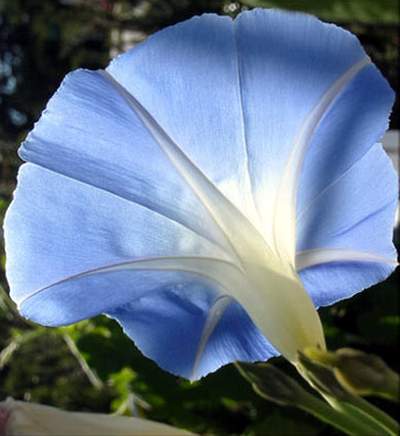
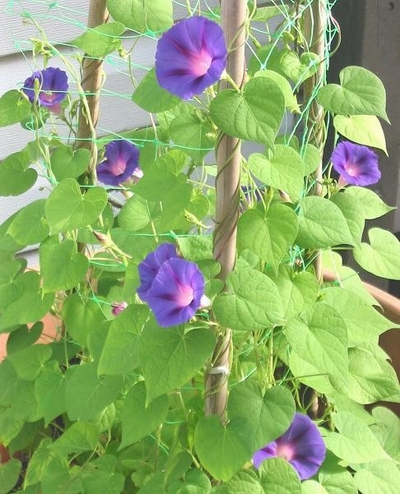
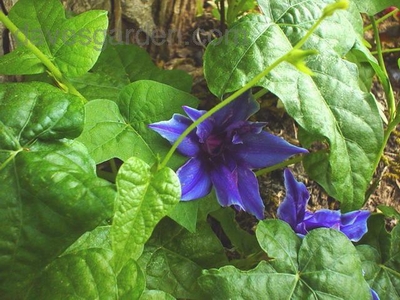
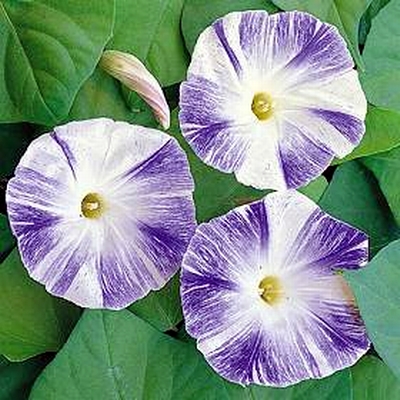
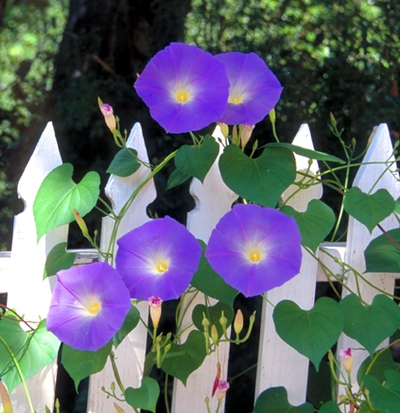
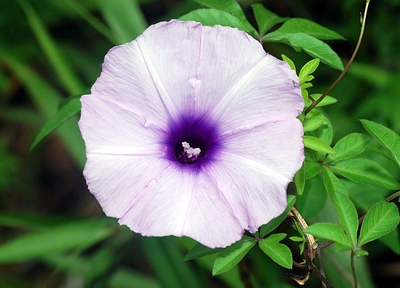

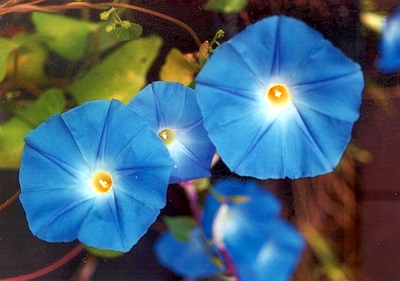
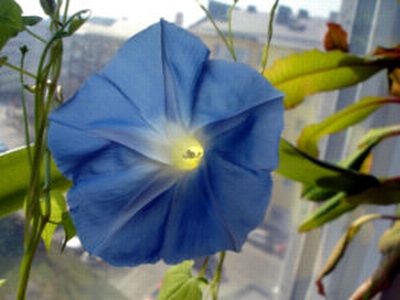
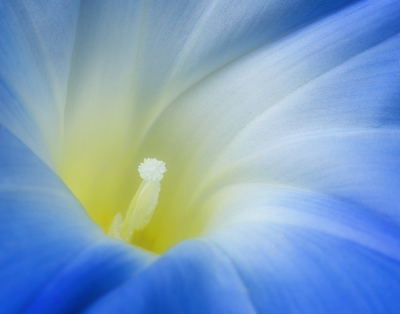
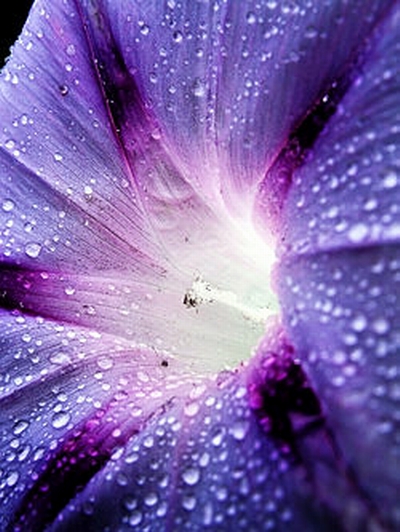
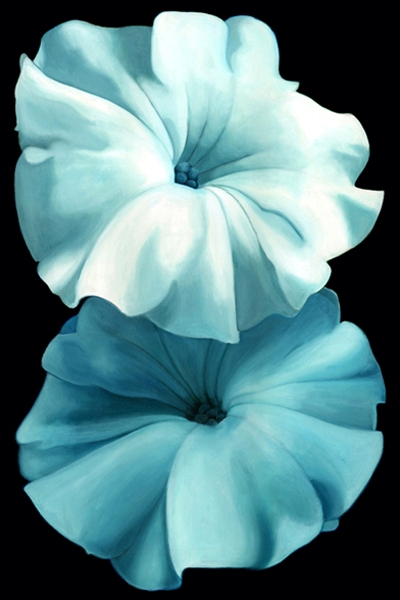
1 comment:
matlabe jalebi bod
baraton arezoye movafaghiyat roz afzon mikonam
Post a Comment